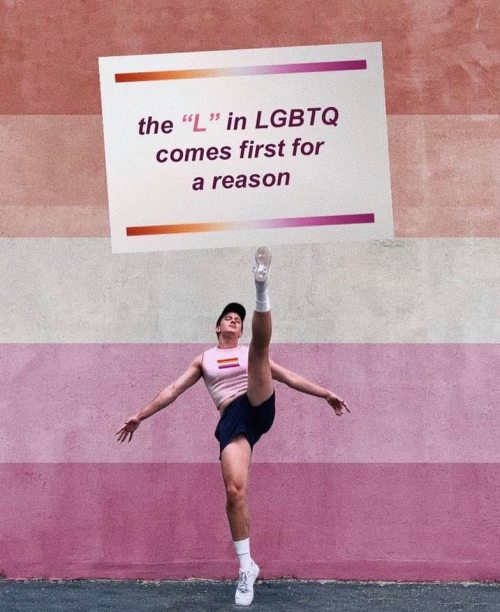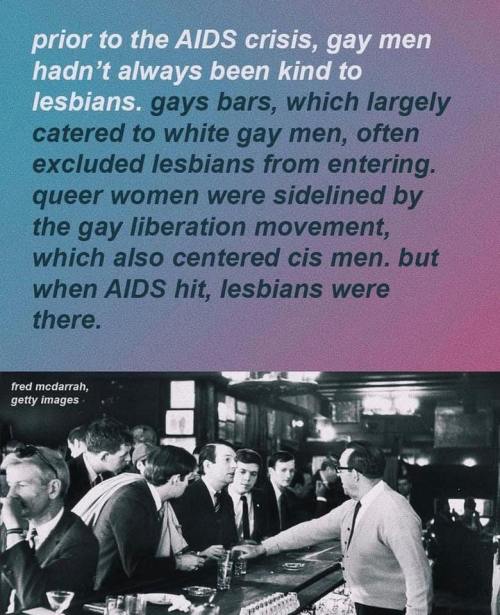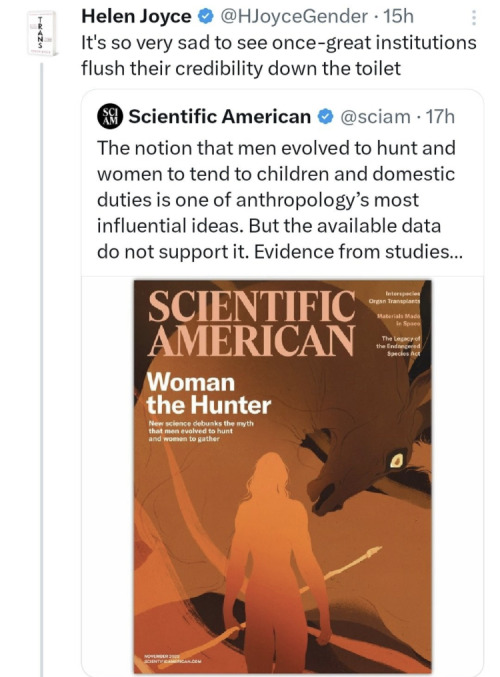This Too Shall Pass But Like Holy Fuck
This too shall pass but like holy fuck
More Posts from Ilyanposting and Others

A trans woman was shot by police at a Pacoima motel last month after she called 911 for help, then approached officers with a knife, according to video footage released Sunday by the Los Angeles Police Department.
Linda Becerra Moran, 30, died Feb. 27 after weeks on life support, leaving her friends and community advocates shaken.
Becerra Moran had told an emergency operator she was being kidnapped in the 10000 block of San Fernando Road on the morning of Feb. 7.
Footage of the encounter showed officers speaking in Spanish with a distraught Becerra Moran in the moments leading up to the shooting, keeping their guns drawn as she paced inside a motel room and they stood in the doorway. They opened fire after she moved slowly toward them, the video showed.
Becerra Moran had reported being held against her will in the motel room as a possible victim of sex trafficking, said Soma Snakeoil, executive director of the Sidewalk Project, a Skid Row nonprofit.
Why the hell does expired, unexposed Kodachrome of all things command a premium
“Yes please, I want the film you can’t develop properly. Yes I’m just going to do it as black and white. What? Why would I buy expired Tri-x instead?”
Transmasculine experiences in sex work are often rendered invisible, so let's share them! Reblog to help get more eyes on this, so we can fundraise enough to pay all the contributors.
The Kickstarter for Working Guys: A Transmasculine Sex Worker Anthology is now live.
If you're curious about trans people who do sex work, read about what will be included in the book and get yourself a copy:






beautiful caffeine on an empty stomach I'm going to live forever
“In the war film, a soldier can hold his buddy—as long as his buddy is dying on the battlefield. In the western, Butch Cassidy can wash the Sundance Kid’s naked flesh—as long as it is wounded. In the boxing film, a trainer can rub the well-developed torso and sinewy back of his protege—as long as it is bruised. In the crime film, a mob lieutenant can embrace his boss like a lover—as long as he is riddled with bullets.
Violence makes the homo-eroticism of many “male” genres invisible; it is a structural mechanism of plausible deniability.”
–Tarantino’s Incarnational Theology: Reservoir Dogs, Crucifixions, and Spectacular Violence. Kent L. Brintnall.
Y'all I know that when so-called AI generates ridiculous results it's hilarious and I find it as funny as the next guy but I NEED y'all to remember that every single time an AI answer is generated it uses 5x as much energy as a conventional websearch and burns through 10 ml of water. FOR EVERY ANSWER. Each big llm is equal to 300,000 kiligrams of carbon dioxide emissions.
LLMs are killing the environment, and when we generate answers for the lolz we're still contributing to it.
Stop using it. Stop using it for a.n.y.t.h.i.n.g. We need to kill it.
Sources:




- Julia Serano
This is so important for every trans person & ally to learn. I remember when I first made this blog, I accidentally reblogged a TERF post every once in a while and didn't realize it at all until ppl started making me aware. In hindsight, the issue wasn't that I wasn't well-informed about terf dogwhistles or that I didn't have enough of them blocked, although that was a big part of it, it was because I wasn't taking all forms of sexism equally seriously. If you on some level believe that women are purer & safer & better people than men, that male sexuality is scary & predatory or that one can be "tainted" by masculinity, you're going to be an easier target for TERFs.
It's so important that we as trans & queer people approach this "cultural feminism" as Serano calls it with zero tolerance. Only that way we can keep our spaces safe & welcoming for everyone & give TERFs no chance.
The only way out of this, as far as I can see, is for us as a trans community to explicitly (and loudly) reject cultural feminism—both its essentialism and its zero-sum conceptualization of gender-based oppression. If we did this, then we could all openly discuss our experiences with oppositional and traditional sexism (and the intersection thereof) without other trans people presuming that we’re implying that they have not been impacted by these forces—or worse, that they must be one of our “oppressors.”










The LGBTQ community has seen controversy regarding acceptance of different groups (bisexual and transgender individuals have sometimes been marginalized by the larger community), but the term LGBT has been a positive symbol of inclusion and reflects the embrace of different identities and that we’re stronger together and need each other. While there are differences, we all face many of the same challenges from broader society.
In the 1960′s, in wider society the meaning of the word gay transitioned from ‘happy’ or ‘carefree’ to predominantly mean ‘homosexual’ as they adopted the word as was used by homosexual men, except that society also used it as an umbrella term that meant anyone who wasn’t cisgender or heterosexual. The wider queer community embraced the word ‘gay’ as a mark of pride.
The modern fight for queer rights is considered to have begun with The Stonewall Riots in 1969 and was called the Gay Liberation Movement and the Gay Rights Movement.
The acronym GLB surfaced around this time to also include Lesbian and Bisexual people who felt “gay” wasn’t inclusive of their identities.
Early in the gay rights movement, gay men were largely the ones running the show and there was a focus on men’s issues. Lesbians were unhappy that gay men dominated the leadership and ignored their needs and the feminist fight. As a result, lesbians tended to focus their attention on the Women’s Rights Movement which was happening at the same time. This dominance by gay men was seen as yet one more example of patriarchy and sexism.
In the 1970′s, sexism and homophobia existed in more virulent forms and those biases against lesbians also made it hard for them to find their voices within women’s liberation movements. Betty Friedan, the founder of the National Organization for Women (NOW), commented that lesbians were a “lavender menace” that threatened the political efficacy of the organization and of feminism and many women felt including lesbians was a detriment.
In the 80s and 90s, a huge portion of gay men were suffering from AIDS while the lesbian community was largely unaffected. Lesbians helped gay men with medical care and were a massive part of the activism surrounding the gay community and AIDS. This willingness to support gay men in their time of need sparked a closer, more supportive relationship between both groups, and the gay community became more receptive to feminist ideals and goals.
Approaching the 1990′s it was clear that GLB referred to sexual identity and wasn’t inclusive of gender identity and T should be added, especially since trans activist have long been at the forefront of the community’s fight for rights and acceptance, from Stonewall onward. Some argued that T should not be added, but many gay, lesbian and bisexual people pointed out that they also transgress established gender norms and therefore the GLB acronym should include gender identities and they pushed to include T in the acronym.
GLBT became LGBT as a way to honor the tremendous work the lesbian community did during the AIDS crisis.
Towards the end of the 1990s and into the 2000s, movements took place to add additional letters to the acronym to recognize Intersex, Asexual, Aromantic, Agender, and others. As the acronym grew to LGBTIQ, LGBTQIA, LGBTQIAA, many complained this was becoming unwieldy and started using a ‘+’ to show LGBT aren’t the only identities in the community and this became more common, whether as LGBT+ or LGBTQ+.
In the 2010′s, the process of reclaiming the word “queer” that began in the 1980′s was largely accomplished. In the 2020′s the LGBTQ+ acronym is used less often as Queer is becoming the more common term to represent the community.
As a trans man and as a Ukrainian Jew, I cannot stress how important it is for us to know our history.
LGBTQ representation in Slavic countries is almost nonexistent. The ubiquity of gender norms is so often baked into our culture and societies. The looming threat of violence if we don't comply is so omnipresent that it prevents us from forming a strong community. Our stories are shared privately, hushed, with bated breath from friend to friend.
Far too much, i've witnessed the loneliness and alienation of people like me, the paralysing fear in parents' eyes for the fates of their children. I still cannot share my transness with my closest friends or relatives. People I have known since I was a child, whom I've shared my whole life with.
Imagine how many of us are living in the exact same circumstances. But we can never appease them enough, no matter how much we bend and mold ourselves for a semblance of normalcy that never existed.
It does not have to stay this way. Through making our history known, we must stay alive and stand united now more than ever.
We have always existed, and we aren't going anywhere.
Queer Jews Project Day 8 - Berel-Beyle

We only know about Berel-Beyle through Yeshaye Katovski’s letter to the Forward in 1936 about “the girl who became a man.” To summarize: Berel-Beyle was AFAB, grew up in Krivozer, Ukraine, left home for Odessa, transitioned to a man, went back to his hometown, was accepted by his community, and married an old girlfriend, Black Rachel.
To quote the letter, “In our shtetl, Berel-Beyle always had a good name as a fine, upstanding Jew.”
I wish we knew more about this trans ancestor, but I’m glad we know about him.
Learn more about Berel-Beyle here.
Queer Jews Project

helen “trans people are perpetuating gender steriotypes” joyce is now upset that the scientific american is writing about how women were hunters too back in the day, not just mothers and caretakers. feminist win!
-
 aconstantparallel reblogged this · 3 weeks ago
aconstantparallel reblogged this · 3 weeks ago -
 gogh-chase-the-stars reblogged this · 3 weeks ago
gogh-chase-the-stars reblogged this · 3 weeks ago -
 100nomdeplume001 liked this · 3 weeks ago
100nomdeplume001 liked this · 3 weeks ago -
 a-mayan-joy-has-nuts liked this · 3 weeks ago
a-mayan-joy-has-nuts liked this · 3 weeks ago -
 kittykat1325 reblogged this · 3 weeks ago
kittykat1325 reblogged this · 3 weeks ago -
 kittykat1325 liked this · 3 weeks ago
kittykat1325 liked this · 3 weeks ago -
 luvleyangeldust liked this · 3 weeks ago
luvleyangeldust liked this · 3 weeks ago -
 pink--tiefling liked this · 3 weeks ago
pink--tiefling liked this · 3 weeks ago -
 xplugged710princessx reblogged this · 3 weeks ago
xplugged710princessx reblogged this · 3 weeks ago -
 whimsikolya liked this · 3 weeks ago
whimsikolya liked this · 3 weeks ago -
 ghostsaberwolf reblogged this · 3 weeks ago
ghostsaberwolf reblogged this · 3 weeks ago -
 sex-in-the-mirror reblogged this · 3 weeks ago
sex-in-the-mirror reblogged this · 3 weeks ago -
 monh-tha-meineis reblogged this · 3 weeks ago
monh-tha-meineis reblogged this · 3 weeks ago -
 jmatt22 liked this · 3 weeks ago
jmatt22 liked this · 3 weeks ago -
 the-tatted-scientist-v liked this · 3 weeks ago
the-tatted-scientist-v liked this · 3 weeks ago -
 depraved-darlingg reblogged this · 3 weeks ago
depraved-darlingg reblogged this · 3 weeks ago -
 phnmnm liked this · 3 weeks ago
phnmnm liked this · 3 weeks ago -
 howls-moving-violation reblogged this · 3 weeks ago
howls-moving-violation reblogged this · 3 weeks ago -
 howls-moving-violation liked this · 3 weeks ago
howls-moving-violation liked this · 3 weeks ago -
 twofistfulsofzen reblogged this · 3 weeks ago
twofistfulsofzen reblogged this · 3 weeks ago -
 indiscriminateindecision reblogged this · 3 weeks ago
indiscriminateindecision reblogged this · 3 weeks ago -
 xxhallielujahxx reblogged this · 3 weeks ago
xxhallielujahxx reblogged this · 3 weeks ago -
 eldieeeee reblogged this · 3 weeks ago
eldieeeee reblogged this · 3 weeks ago -
 vibeyalmighty reblogged this · 3 weeks ago
vibeyalmighty reblogged this · 3 weeks ago -
 etherealxbeing reblogged this · 3 weeks ago
etherealxbeing reblogged this · 3 weeks ago -
 anon1mity reblogged this · 3 weeks ago
anon1mity reblogged this · 3 weeks ago -
 mothersuperior-jumpthegun reblogged this · 3 weeks ago
mothersuperior-jumpthegun reblogged this · 3 weeks ago -
 midnightmarginalia reblogged this · 3 weeks ago
midnightmarginalia reblogged this · 3 weeks ago -
 pizduedne reblogged this · 3 weeks ago
pizduedne reblogged this · 3 weeks ago -
 sillyyyy-girl reblogged this · 3 weeks ago
sillyyyy-girl reblogged this · 3 weeks ago -
 yodogjordan88 reblogged this · 3 weeks ago
yodogjordan88 reblogged this · 3 weeks ago -
 elizabeth502 liked this · 3 weeks ago
elizabeth502 liked this · 3 weeks ago -
 thepkd3m0n liked this · 3 weeks ago
thepkd3m0n liked this · 3 weeks ago -
 lobstainthenight reblogged this · 3 weeks ago
lobstainthenight reblogged this · 3 weeks ago -
 lobstainthenight liked this · 3 weeks ago
lobstainthenight liked this · 3 weeks ago -
 as-golddess reblogged this · 3 weeks ago
as-golddess reblogged this · 3 weeks ago -
 as-golddess liked this · 3 weeks ago
as-golddess liked this · 3 weeks ago -
 simplyym3 liked this · 3 weeks ago
simplyym3 liked this · 3 weeks ago -
 the-mind-of-a-madman reblogged this · 3 weeks ago
the-mind-of-a-madman reblogged this · 3 weeks ago -
 basura-coded reblogged this · 3 weeks ago
basura-coded reblogged this · 3 weeks ago -
 degenbasura reblogged this · 3 weeks ago
degenbasura reblogged this · 3 weeks ago -
 degenbasura liked this · 3 weeks ago
degenbasura liked this · 3 weeks ago -
 urfavmilfshake reblogged this · 3 weeks ago
urfavmilfshake reblogged this · 3 weeks ago -
 strawberryysilk liked this · 3 weeks ago
strawberryysilk liked this · 3 weeks ago -
 pan-galactic-enby reblogged this · 3 weeks ago
pan-galactic-enby reblogged this · 3 weeks ago -
 chronicallygreyt4ever reblogged this · 3 weeks ago
chronicallygreyt4ever reblogged this · 3 weeks ago -
 chronicallygreyt4ever liked this · 3 weeks ago
chronicallygreyt4ever liked this · 3 weeks ago -
 rayyzsteeze reblogged this · 3 weeks ago
rayyzsteeze reblogged this · 3 weeks ago -
 databard reblogged this · 3 weeks ago
databard reblogged this · 3 weeks ago -
 bashssoftspot reblogged this · 3 weeks ago
bashssoftspot reblogged this · 3 weeks ago

shit(and sometimes serious)posts of a 22yo trans man
389 posts